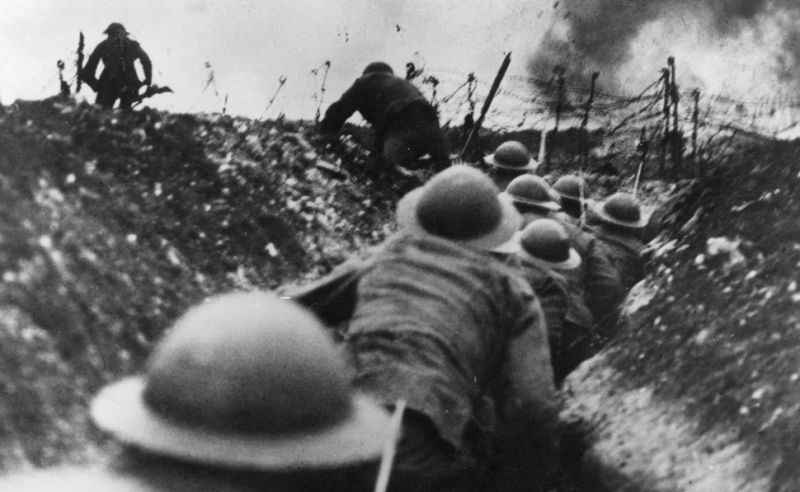2017 marks the 100-year anniversary of the United States entering World War One.
West Easton had 55 men serve in the Armed Forces during that war. They, along with every U.S. veteran who served in “The World War,” as it was referred to before WWII, have passed away.
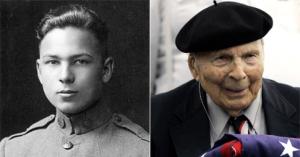
The last U.S. Veteran of World War I, Frank Woodruff Buckles, age 110, died on February 27, 2011. Buckles was a United States Army soldier. He enlisted in the U.S. Army in 1917 at the age of 16, driving ambulances and motorcycles near the front lines in Europe. Though he never saw combat, a requirement for burial in Arlington Cemetery, he was given special dispensation and rests there today.
Claude Stanley Choules, the last known World War I combat veteran died in Australia aged 110, on May 5, 2011.
The last living veteran, from all countries that fought in the first World War (28 July 1914 – 11 November 1918) was a woman, Florence Green, a British citizen who served in a support role with the Allied armed forces, and who died 4 February 2012, aged 110.
It remains to us, the generations that follow, after every witness to a war has passed, to see those who served in that war are not forgotten.
The U.S. declared war against Germany on April 6, 1917. During the 19 months the United States actively engaged in WWI, the “Doughboys” suffered 116,516 killed and 204,002 wounded. They were not only killed and wounded with bullets and artillery, but a new weapon – mustard gas. A weapon so horrible, that civilized nations agreed to never use poison gas again.
My own grandfather survived a small dose of gas only weeks after successfully breaking through German lines, as a member of the U.S. force that rescued the surrounded “Lost Battalion” from the Argonne Forest. Only 17 at the time and eager to serve his new country after arriving from Italy at the age of 11, he had no regrets. He fought for his country, proudly calling himself an American through his heavy Italian accent (he refused to refer to himself in the hyphenated version of Italian-American).
World War One wasn’t designated a number when it ended. When the Armistice was signed on November 11, 1918, many believed there would never be another World War. It would only take 23 years for Japan, a former ally in WWI, to unite even the most ardent isolationists with those who sought an active role in defeating the Axis powers and defend Great Britain.
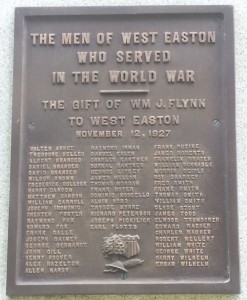
World War One was a watershed in American history. The United States’ decision to join the battle in 1917 “to make the world safe for democracy” proved pivotal in securing allied victory — a victory that would usher in the American Century.
In the war’s aftermath, individuals, towns, cities, counties, and states all felt compelled to mark the war, as did colleges, businesses, clubs, associations, veterans groups, and houses of worship. Thousands of monuments — from simple honor rolls, to Doughboy sculptures, to grandiose architectural ensembles — were erected throughout the US in the 1920s and 1930s, blanketing the American landscape.
Each of these monuments, regardless of size or expense, has a story. But sadly, as we enter the war’s centennial anniversary, these monuments and their very purpose — to honor in perpetuity the more than four million Americans who served in the war and the more than 116,000 who were killed — have largely been forgotten. And while some monuments are carefully tended, others have fallen into disrepair through neglect, vandalism, or theft. Some have been destroyed. Others moved to less prominent locations, to make room for the new WWII monuments that were set in their former place of honor.
Such a change took place in West Easton. “Hidden in plain sight” is the term used in the video above. The CBS News presentation from 2014 describes many of the monuments to WWI veterans that remain today. They exist, but are unnoticed.
West Easton has it’s own “hidden in plain sight” plaque that pays respect to those 55 men from West Easton who served in WWI. Its current status was not done intentionally, or with purposeful disrespect.
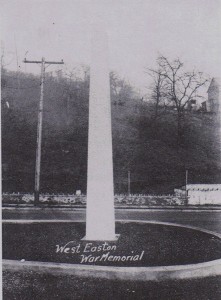
The original WWI monument in West Easton was a tall obelisk that was placed where the current monument stands today. Following WWII, the obelisk was removed and rather than retain the WWI monument, as an individual salute to those who served in that war, it was reportedly used in the foundation for the new monument.
The grounds were significantly smaller when the obelisk was erected, as Spring Street ran behind the monument, leaving only a small patch of land between it and 7th Street.
The WWII plaque was placed on the new monument facing the street and the WWI plaque was mounted on the back. At the time, there was no shrubbery and visitors could easily walk around the circumference of the new monument.
Spring Street is now rerouted from the time when the obelisk stood. It turns to join 7th Street below the monument. A flagpole was installed behind the monument and shrubs were planted behind and parallel to the sides, basically removing any interest in walking to the back of the monument, as the area of a visitors attention is now focused on the front, with no indication that another plaque is mounted behind the newer monument.
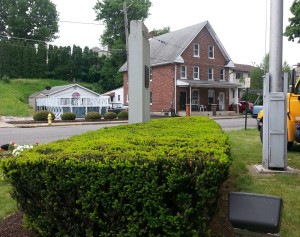
Myself, being a transplant to West Easton, lived here over two years before I noticed it and then, it was only by accident. While looking at the Spring House behind the monument, I saw a small plaque on the back of the monument from a distance and walked closer out of curiosity. I saw that WWI veterans were listed, with the plaque having been donated in 1927. I thought it odd that the obviously original plaque would be placed on the back of what everyone was referring to as the “WWII Monument.”
It took some time to find out its history, how it was seemingly relegated to a position of obscurity, and also the history of the monument which stands today.
On June 12th, at the next Council meeting, I will be introducing a Resolution to correct this situation. I will be seeking an approved Resolution from Council to relocate the 18″ x 14″ WWI plaque to the front of the monument, to be mounted below the WWII plaque, returning these men to a place of prominence with their Brothers in Arms, from a different generation.
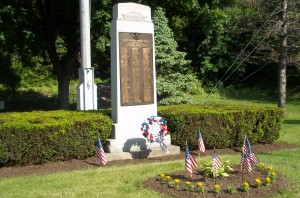
Also as part of the Resolution, should any future plaques honoring veterans of Korea, Vietnam, the Middle East, or other actions with an enemy be added to the rear of the monument, that the landscaping be changed to allow and invite by design, visitors to view the back and sides, unfettered by shrubbery.
As the son of a WWII veteran, grandson of a WWI veteran, and simply as a citizen thankful to all who serve – especially in times of war, I don’t want to see any man or woman who put themselves in harms way – no matter how long ago – relegated to obscurity, or “hidden in plain sight.”
I hope that residents and other Council members will agree.
NOTE: National memorials have been sculpted and erected in Washington, DC, for those who died in WWII, Korea, and Vietnam. No national memorial exists for those who died in WWI. In 2012, as a result of Mr. Buckles, who previously testified before Congress and worked for years on the effort as Honorary Chairman of The WWI Memorial Foundation, a national memorial design was approved, but has yet to be built.
Disclaimer: On January 4, 2016, the owner of WestEastonPA.com began serving on the West Easton Council following an election. Postings and all content found on this website are the opinions of Matthew A. Dees and may not necessarily represent the opinion of the governing body for The Borough of West Easton.

